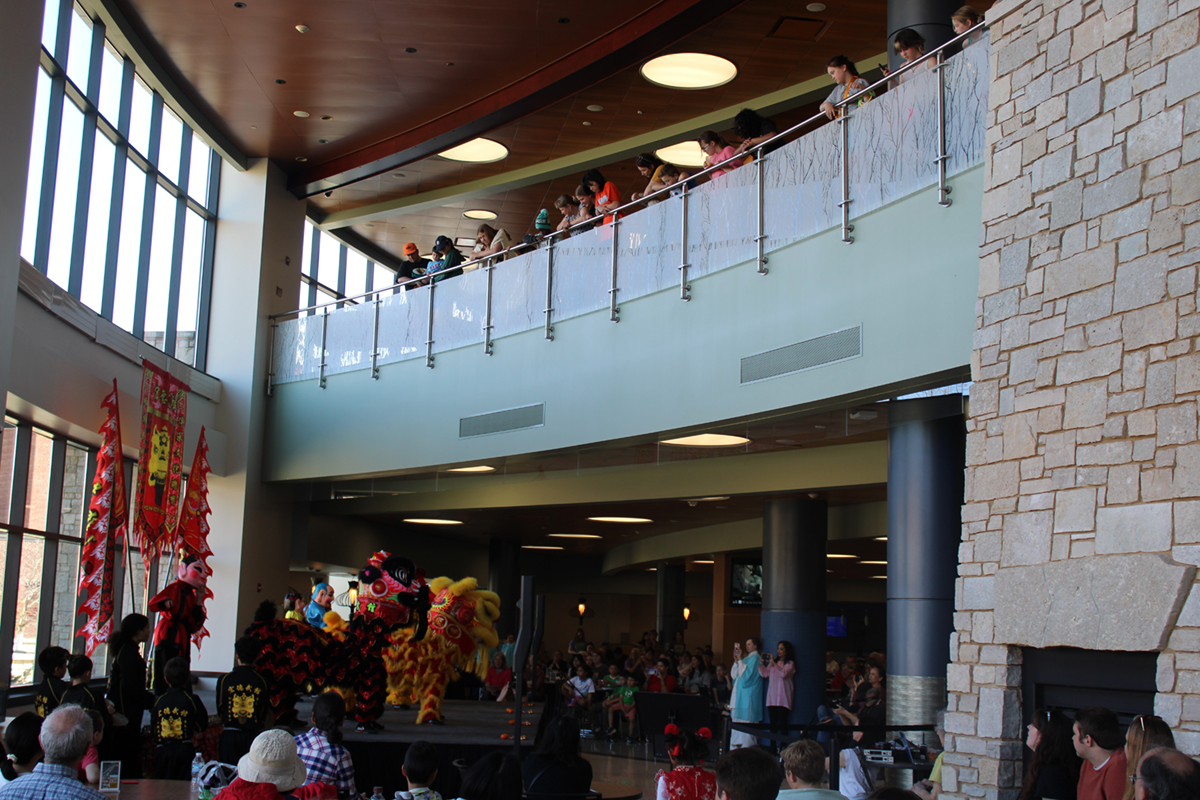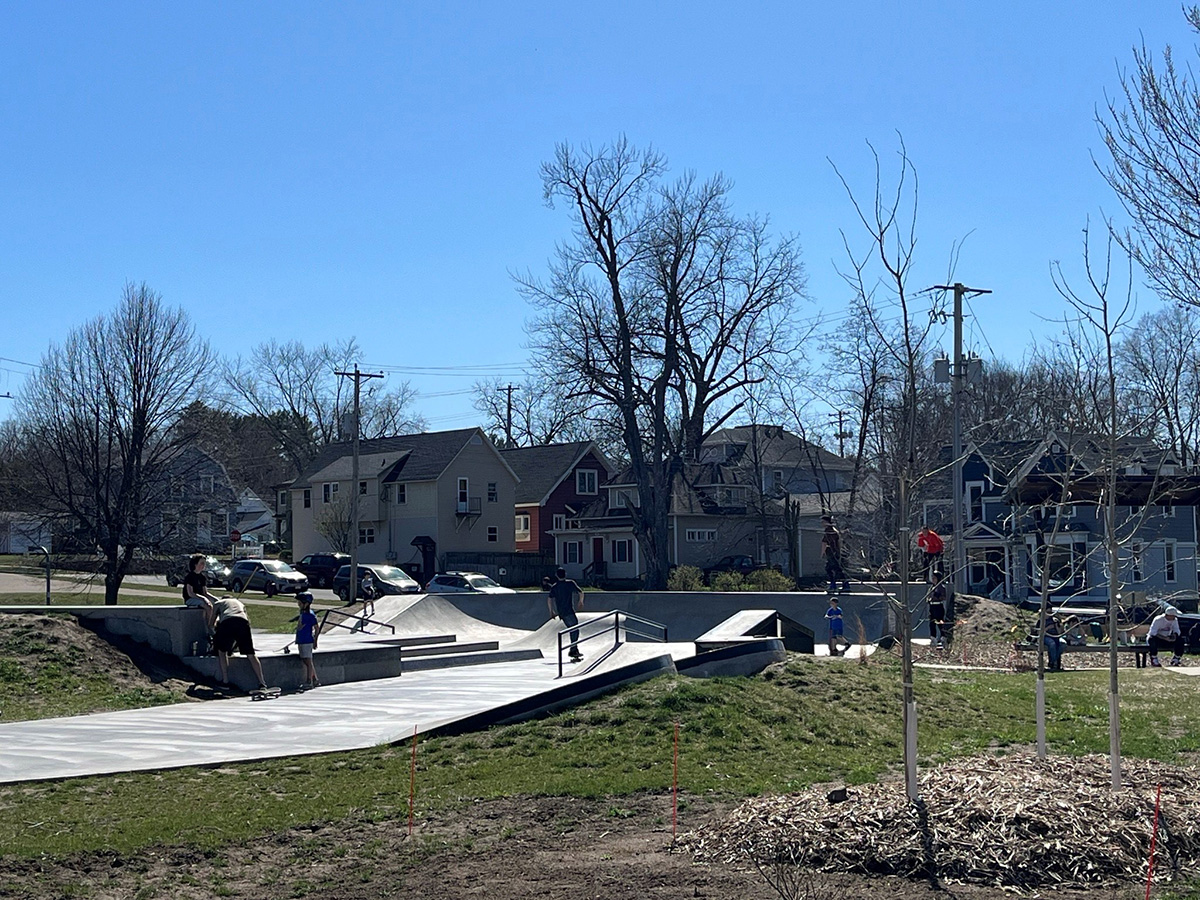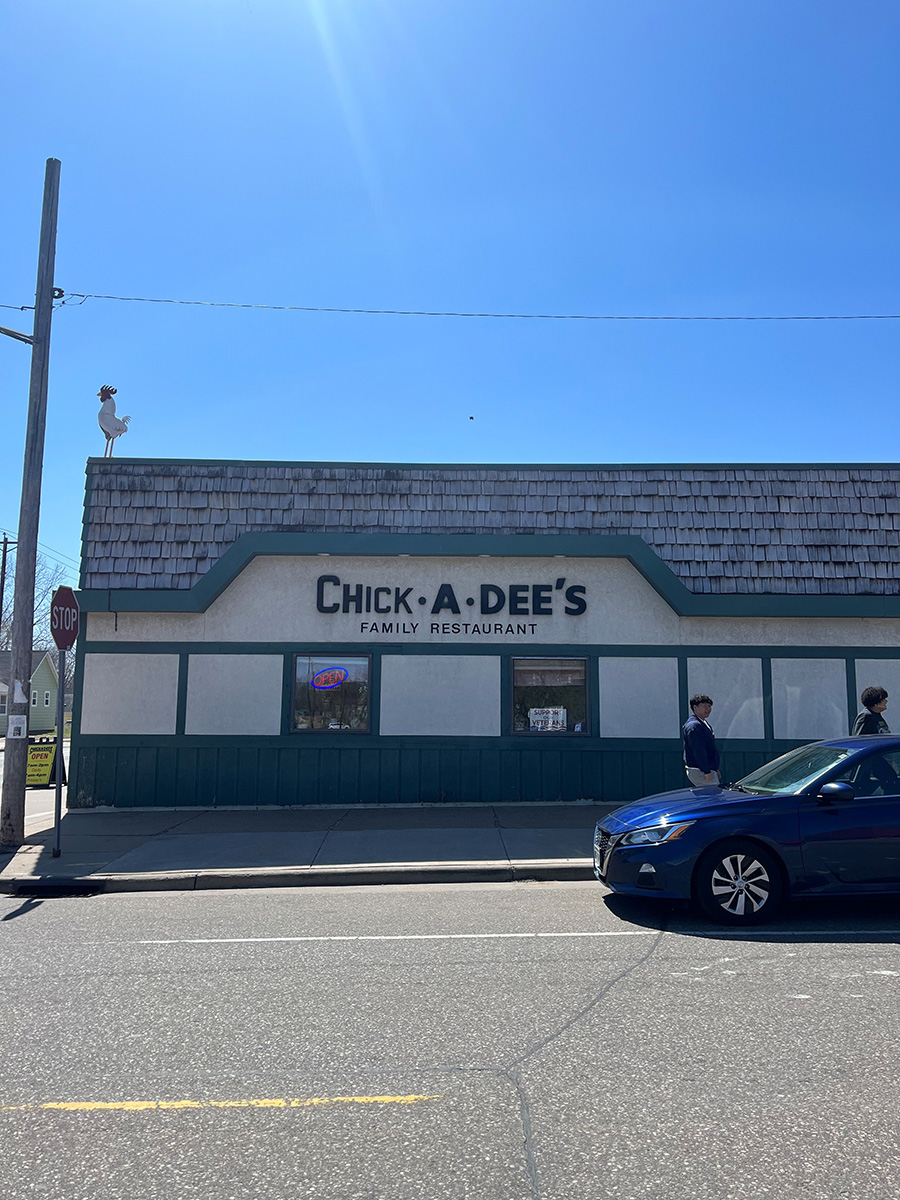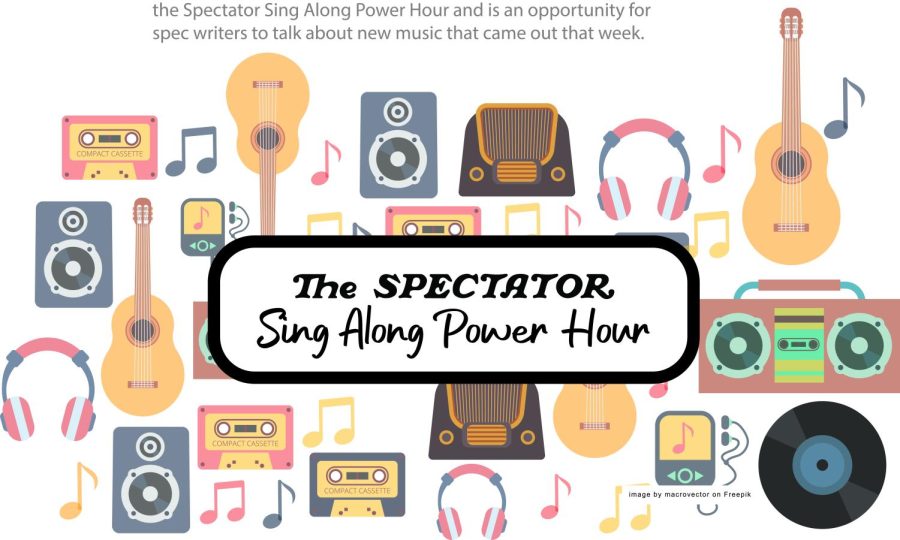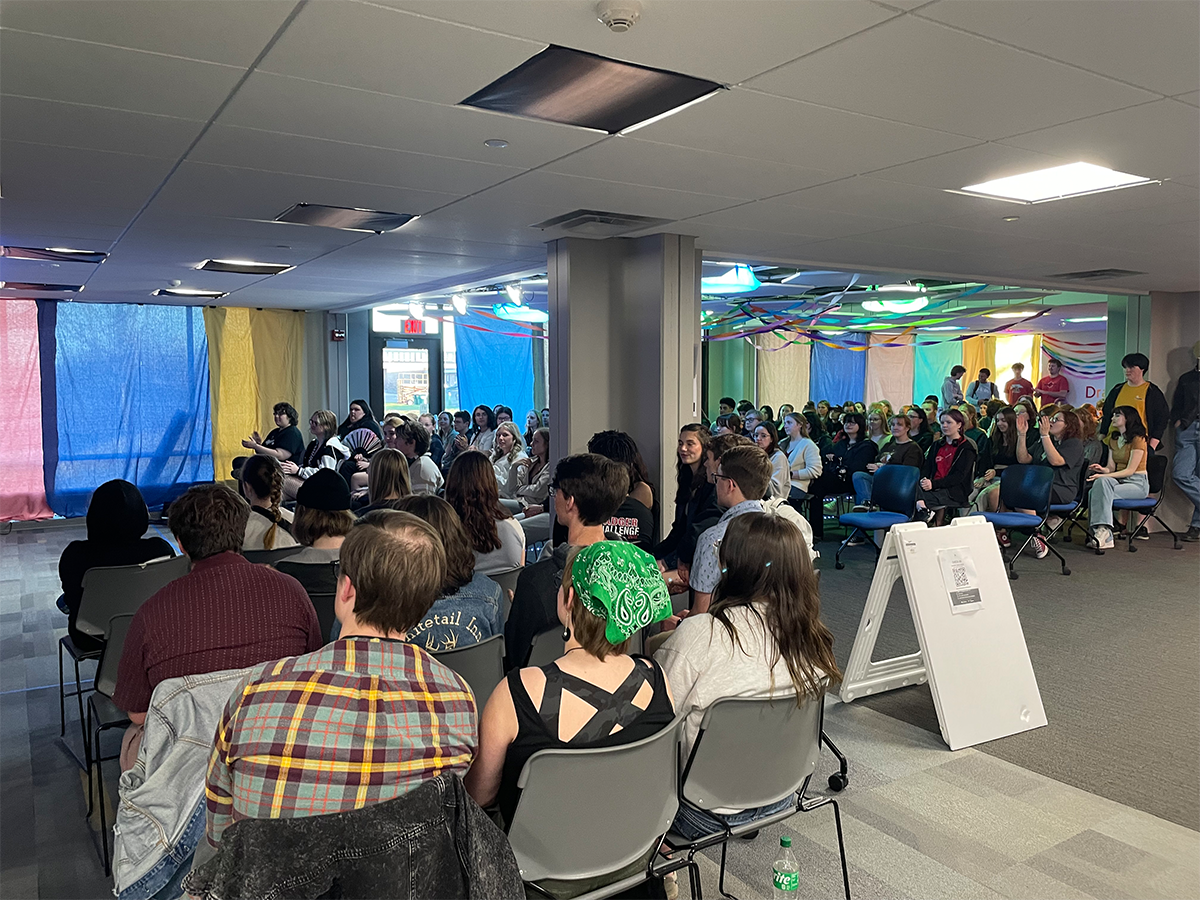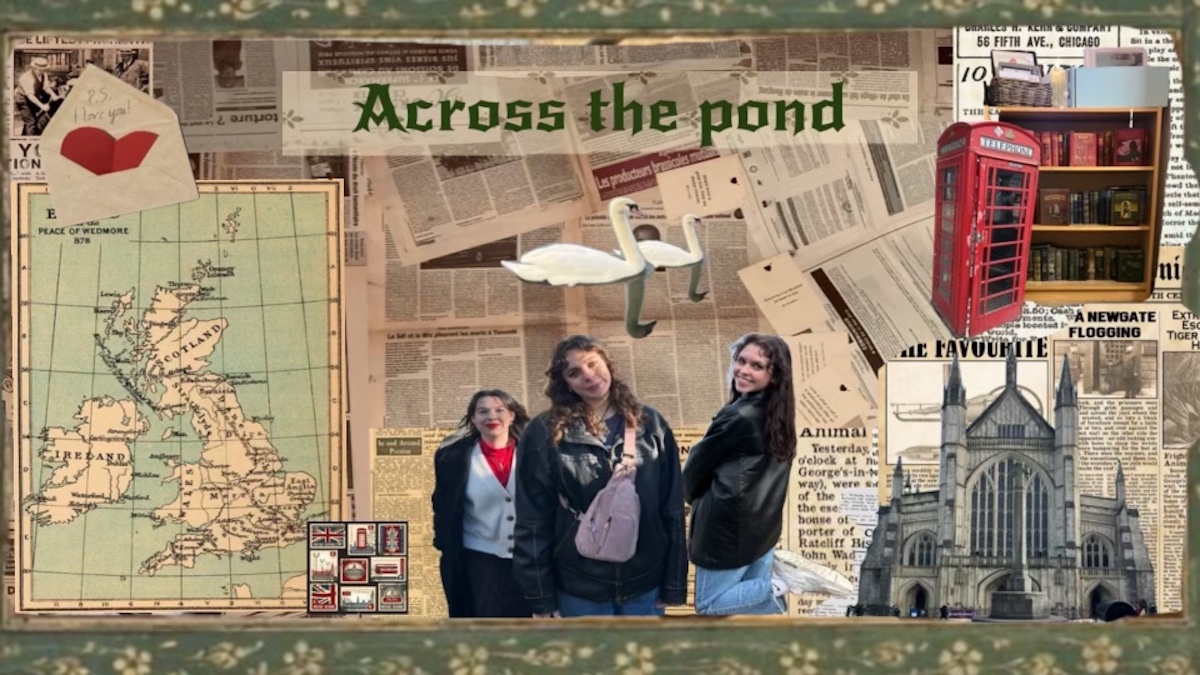For many, art is purely visual; you see it, enjoy it and move on.
Andrea Carlson, an artist with work in Minneapolis and London, said that it is also about what isn’t there on the canvas — what went into making the piece.
“We’ll (artists) put ourselves in a creative space and we’ll make this thing,” she said. “I think there is so much hidden to an
artist’s process.”
Carlson is not just an artist. She will also be guest curating the newest Foster Gallery exhibit called “Hidden Fortress”.
Her curator’s statement explained that the exhibit is based in part on a Japanese film from 1958 about a princess who covertly travels through the land. The people behave in ways she had not previously seen and in ways that she had thought to be hidden. It takes her some time to realize that she is the same as them.
Carlson said the exhibit will have viewers interact with art in the same way — they will have to deal with what is not apparent
or seen.
Karen O’Day, who is a professor of art history at UW-Eau Claire and was instrumental in bringing Carlson to the university, said she appreciates all the different forms the art in the exhibit has taken.
“I love the range of media that she’s brought together,” she said. “I think it’s really representative of the art world.”
One example of what is going to be on display is a colorful print by Frank Big Bear (below) where the intricacies of the work cannot be seen without close inspection.
“There’s almost a hidden little world inside the landscapes he creates,” Carlson said.
Another example is a piece done by a dance student. She broke into an office at her college and posed naked on a copy machine while it was running. The only evidence of this hidden performance is on the paper.
“These (the pieces of art) are stages,” Carlson said. “Think of the work as stages and that a performance has taken place.”
Tom Wagener, director of the Foster Gallery, said he hopes people will gain a new perspective from this exhibit.
“We’re showing people who are artists first and how they are bringing their culture and their heritage into their art work,” he said. “I think from my standpoint, it will be a refreshing change.”
Carlson said she gathered the artists for her show through the connections she has made being an artist herself. In some cases, she has gone to their openings and they have gone to hers.
Wagener said the Foster Gallery doesn’t host guest curators too often.
The Gallery ‘rents’ an exhibit that may travel the country, but in this case, the curator is creating a show just for the Foster.
This is often a long process, Wagener said, that takes several years to set up.
Carlson said that this was the case for her. She guest lectured at the university in 2008 in a couple of O’Day’s art history classes.
O’Day, who is part of the selection committee, asked Carlson to come back and do this show, because of her engaging teaching style and friendliness. She also appreciates her ability as an artist.
“She has this incredible perspective on contemporary art,” O’Day said. “She pulls ideas and images from literature, from art history.”
Wagener found Carlson easy to work with, which isn’t always the case with guest curators, he said.
“Fortunately, Andrea Carlson has been outstanding to work with,” he said. “She has been very organized and on top of things.”
Carlson explained that there are differences between curating art and creating it. She said creating art is typically more of an individual process, whereas curating involves lots of different people.
She said being an artist has helped her to be a better curator. Carlson likes space when she creates and uses the same philosophy when curating.
“I let them go and frame their work how they need to and try to be as un-invasive as possible,” she said.
Though she prefers being an artist, she thinks curating this show will be useful for her and, she hopes, students.
“I think it will be great to talk to some students and see if they are thinking of art in the same way or if they are having challenges to the way I’m viewing art,” she said. “I’m anticipating a dialogue.”

